
Mountain Streams --Vol.3--

Mt. Myohjo and the Kotaki River.
The Tiny Pond on the Bank of the Kotaki River
I started fishing in the Kimpusan River, then took a fishing tour along the granite banks and finally reached Joetsu district in summer of 1975. There was a beautiful creek named the Kotaki River, a tributary of the Hime River. Just up the current where the Kotaki River joined the main stream was Mt. Myohjo rising, which, I heard, was famous for rock climbing. The mountain soared from the brink of the bank like a huge chunk of rock, which kept people away and made the scenery of the creek sublime. The area was famous for producing jade and a subdued green deep pool looked beautiful as if some jade had been dissolved in water.I drove along a path near the river through the forest as far as the power station. (Now this path is closed.) The river forked off in two directions at the end of the path. In the beginning I preferred to fish Higashimata, the east tributary, which flowed from right hand side, simply because this tributary was filled with white stones and it was light there. Deep in the creek was there a lot of remaining snow even in summer. For safety's sake I always travelled there after the rainy season was over.
It was in the end of July. I walked into Higashimata, which had already had a low water. Clear water trickled only in the centre of the large banks. I started casting size 10 Black Coachman at the edge of the head of the small pool. It was already becoming my standard fly. In the second small deep pool I walked into, a nearly 16 inch char jumped at my fly from behind the rock. I landed it to find no fly in its mouth. It completely swallowed the size 10 dry fly.

A char in the Kotaki River. Their life is mysterious in such mountain stream.
I caught 5 or 6 char in this way before I reached a barrier of artificial dam to prevent landslides. I looked around carefully, wondering why such barrier was necessary here deep in the mountain. I usually returned from this barrier but on that day I wanted to go upstream.
I could always catch some char in the tiny pond below the barrier. But water never flowed down from the barrier. Only some water oozed from underground. The artificial dam was likely to be completely covered by earth and sand. The map showed that there was a sluice gate 1km upstream. Probably rich water flowed upstream.
I clung to the mountain face on the left. I climbed a little steep slope, found the path trodden when steel towers were built for power lines and walked down along the path to the bank. Dull scenery spread there. Only pebbles were scattered in the dam. Up the desert-like bank I could see steep rocks. There must be a sluice gate around there, where the river looked differently. When I walked through the dry bank for a while near to the steep slope, I found a tiny pond. Probably some water oozed from underground, just like the one below the barrier. Looking for start of a trail up the slope, I came near to the pond and suddenly stopped there. I saw some char swimming in the pond! Not one or two but a considerable number of char were swimming together in the pond at most 5m in diametre. How can they survive? The pond was completely cut off and had neither head nor tail.

A snow bridge over the Kotaki in August.
I just gazed at the mysterious scene, then was dying to cast my fly. The fly line landed on the dry stone and only the leader and the fly reached the water surface. In the next moment some char came up to the fly and a remarkably large one bit it. I was standing about 10 m away from the pond. As I did not want to get closer to the char, I retrieved the line from there. The char struggled violently and finally lay under my feet with its body completely covered with sand. The next two char were landed in the same way. Finding no more large char, I walked near to the pond. Several remaining char were all rushing around the pond in utter confusion to find the stone to hide themselves. Unfortunately, there was not a stone large enough to hide them. But half a minute later all char were gone. The pond was not so deep, at most knee-deep. To satisfy my curiosity, I waded through the pond and tried to find their hiding place but in vain. Char really disappeared. I was reminded of the mysterious story about char that Mr. Abe had told me. They were gone underground along a water vein. It is possible that they were swimming in the pond below the barrier.

All char here, their body colour looked like smoked fish.
Wake up, Char!
After I had a good time with char, I clung to the plant to climb the steep slope covered with stones. I could see the sluice gate over there. Without it the river must have flowed down vastly, forming a magnificent waterfall. Then I reached up the sluice gate. To my surprise, the river flowed three times as widely as downstream. I fished upstream, full of happy expectations. Fish here were two sizes larger and even the smallest one was over 12 inches long. The trouble was that there were not so many fish. Only one fish stayed in each of good-looking spots.When I turned the second curve in the river I stood still without word. A huge mass of remaining snow blocked the creek. Walking near, however, I found that I could manage to pass it. I walked very carefully to the edge of the snow mass over the creek. There was a rather large pool upstream. Looking into the riverbed covered with bedrock, I could see a remarkably large char. Immediately I began casting. At my first and second castings, the char stayed still as if it had been asleep. At my third casting, however, when the fly passed over it, it moved for the first time. It wiggled and swam downstream a little. At my forth casting, the moment the fly reached the water surface, it came up to it directly from the riverbed and opened its white mouth widely to swallow it. The char was strong, supported by rich water. Its shape and colour were like those of smoked fish.

A crumbling snowy valley stood in our way.
I walked down the snow mass over the creek and passed the pool I had just caught the char. Then I found another huge mass of snow over the creek. This time I decided to walk under the snow mass. Walking through the snow tunnel, I felt comfortable, receiving cool water dripping from the ceiling like a downpour. But realizing that this snow tunnel would melt down someday, I felt rather cold than comfortable. Stepping out of the snow tunnel, I was exposed to the heat under the bright sunshine again, feeling as if I were taking a steam bath. I caught another char, walking through a shallow. Turning the next curve, there appeared an exceptionally huge mass of snow, which completely blocked the creek. It extended approximately more than 50m upstream.
I walked near to know whether I could pass it or what it was like upstream. The huge mass of snow I looked up filled up the creek completely and prevented human beings from walking into it. It was almost impossible to pass it. Furthermore, there was a large opening mouth like a crevasse between the mountain face and the snow mass. Once I slip down, I will never step out of it for myself. Judging from the mountain scenery upstream, another larger mass of snow could fill up the creek. It would be safer to return, so I thought. When I looked around, I found something sticking out of the snow mass at my feet. Wondering what a strange shape it would be if it were a twig, I got rid of snow to find an antelope head. Now I understood why the scent of a mamushi pit viper and the like had been in the air. How many months had the antelope been dead? I felt the mountain warned me not to slip by showing an example. I walked down the snow mass much more carefully than I had walked up.

A char in Higashinomata Are they hibernating throughout the year?
A month later I was heading for the inner part of Nishinomata, the west tributary, which flowed down from left hand side. This creek flowed down from the same watershed as Kitanomata, the north tributary of the Kurobe River and was said to have a long inner part but to be unexpectedly plain. After walking up the mountain path for an hour instead of a steep slope, I could reach the banks, where the river flowed gently through the highlands, as I had been taught before. It was past the middle of August but a lot of broken masses of snow were scattered on the banks here and there. Apart from the strange scenery of the banks, I felt rather comfortable. Sunbeam was still strong but breeze blew among the mountains. Breeze that travelled through snow and ice gave me fine fresh air. Happily enough, a shoal of fish was swimming in every spot. Probably no angler had come here. The only disappointment was that there was no large fish probably because there were too many fish.
In this situation I could get a lot of catch but one thing was unconvincing to me. Fish seemed like asleep. The same thing did not bother me in Higashimata because I knew only a small number of fish were staying there. But in Nishimata a lot of fish completely neglected my fly. To be exact, unless I cast my fly repeatedly, they had no response. At first I thought I had chosen the wrong fly, so I tried some different types. But that made no big difference. Finally, I picked up the first one, Black Coachman again. Well, I noticed later that only this fly had peacock herl body.
-- To be continued --
- NET SHOP INFORMATION
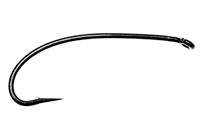
SL6 Black Spey Hooks
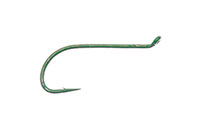
DU3 Limerick Spinner Hooks
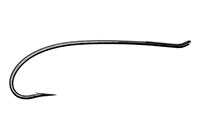
SL4 Single Bartleet Hooks
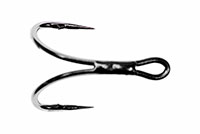
XD1 Tube Fly Double Hooks
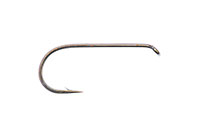
DD2 Flat Perfect Hooks
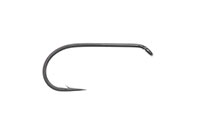
DD1 Black Terrestrial Hooks
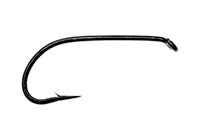
TD4 Old Limerick Wet Hooks
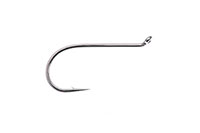
DU1 Silver May Hooks
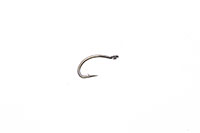
MU1 Flat Midge Hooks
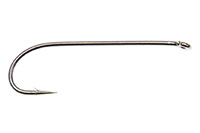
LD3 Long Limerick Hooks
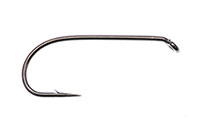
TD2 Summer Sproat Hooks
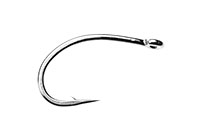
XS1 Tube Single Silver Hooks
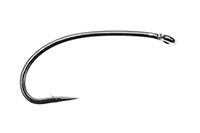
TD6 Siver Sedge Hooks

SL5 Black Spey Hooks

DU3 Limerick Spinner Hooks
- TROPHY CLUB
- FLY SHOW
- EXHIBITION
- MASTERS`
- FLY DRESSING CONTEST Archives
- TRAVELLER Archives
- TACKLE IMPRESSIONS Archives
- ANGLERS` PHOTO GALLERY Archives
- ----------------------------------------------
- トロフィークラブ
- フライショー
- エキシビション
- マスターズ
- フライドレッシング・コンテスト・アーカイヴ
- トラヴェラー・アーカイヴ
- タックル・インプレッション・アーカイヴ
- アングラーズ・フォトギャラリー・アーカイヴ
株式会社サワダ 185-0021 東京都国分寺市南町3-13-4
SAWADA'S INC. 3-13-4 Minamicho, Kokubunji, Tokyo 185-0021, Japan
写真・ドキュメントの無断転載を禁じます。
All the images and documents found on this site are owned by Ken Sawada and may not be used without permission.
But, link to this site is FREE.
Copyright © 2000 - 2025 SAWADA'S INC.. All rights reserved.
SAWADA'S INC. 3-13-4 Minamicho, Kokubunji, Tokyo 185-0021, Japan
写真・ドキュメントの無断転載を禁じます。
All the images and documents found on this site are owned by Ken Sawada and may not be used without permission.
But, link to this site is FREE.
Copyright © 2000 - 2025 SAWADA'S INC.. All rights reserved.
